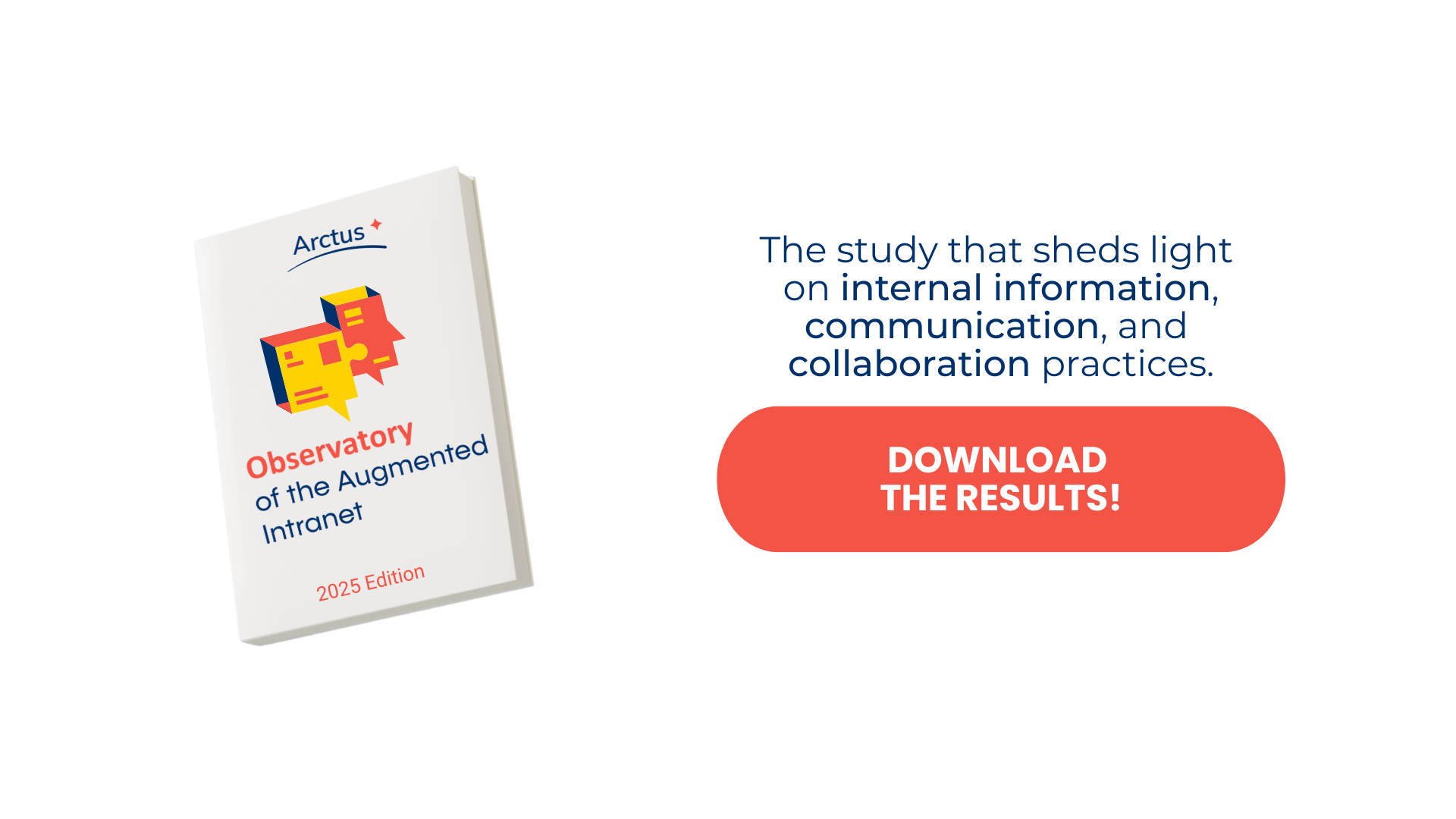DEVELOPING A MOBILE INTRANET, HOW MUCH DOES IT COST? (4/4)
14 August 2023

In a series of four articles, Estelle Banoum and Sébastien Chatel, internal digital transformation consultants at Arctus, explain the five key factors to consider for successfully turning an intranet into a mobile application.
In this fourth article, we discuss the costs associated with mobile intranet development as well as the calculation of the return on investment for your project.
As we discussed in our previous article, there are 4 technical options available to offer a mobile application of your intranet to your employees:
Access through a mobile web browser by entering the URL of your intranet and an identifier.
Downloading a generic application linked to your intranet solution (SharePoint Online, Powell365, Lumapps, etc.), usually bearing the name and logo of the publisher.
Development of a dedicated application specifically for your intranet, featuring a custom name and logo.
Deployment of a Progressive Web App (PWA) that runs in a web browser.
WEB BROWSER OR GENERIC APPLICATION: ECONOMICAL CHOICES
If you choose options 1 and 2 mentioned above, the costs for adapting an intranet to mobile are generally already included in the publisher's licenses. However, be sure to confirm this with your publisher in advance. As a customer, you will benefit from an "automatic", fast, and robust mobile adaptation with controlled costs. However, the possibilities for specific customization or personalization will be very limited.

However, these two options are not without investment. The essential phases of user feedback and functional setup will require time and thus incur expenses. Listening to your "disconnected" users is essential to ensure their needs are met. The functional setup involves configuring your CMS to address these needs.
The associated costs will therefore be linked to the time spent on this subject. It is advisable to seek assistance, especially during this stage, from external consultants (refer to our dedicated article on this topic)
CUSTOM APPLICATION: BEWARE OF BUDGET OVERRUNS
If you prefer the option of developing a custom mobile application (option 3), you are opting for a solution that requires specific development. Designing, developing, configuring, deploying, and maintaining an intranet application will therefore incur additional costs, which we can categorize into 3 categories:

Development and technical setup costs
These are the obvious expenses that will be charged either by the web agency or internal IT teams to develop and configure your application to meet your specifications. It is very difficult to provide a generic estimate for this cost center. It depends on the functional scope of the application and the complexity of your intranet.
The costs of making the application available
These are the expenses related to the time spent on making your application available on public stores (Apple Store / Android Play Store / Huawei AppGallery) or private ones (Company Store, MDM), so that your users can download it onto their devices. This step should not be underestimated, as the approval processes can be cumbersome (even on private stores). For example, Apple will likely require access to your mobile intranet prior to validating its availability on the Apple Store.
Expect around ten man-days to put your application online on all stores.
The maintenance costs
These are the expenses related to all operations that ensure your application will continue to function over time. As mobile device operating systems are constantly evolving, technical operations will be necessary for your application to keep functioning (this is corrective maintenance). Furthermore, you might want to regularly introduce new features or enhance the user experience as you go along. This will inevitably involve additional development (this is adaptive maintenance). It's challenging to estimate an average cost precisely due to the potential significant variations.
While it's difficult to estimate the exact budget required for deploying a customized mobile application, you can generally consider it to be around 20% more or less than the price of your desktop platform. Formalizing your specifications will help you navigate in this direction.
AND WHAT ABOUT THE RETURN ON INVESTMENT IN ALL OF THIS?

Of course, if your internal mobile application project is presented solely from the perspective of expenses and costs, it's unlikely to be approved. That's why we also provide you with some calculation approaches for your Return on Investment (ROI).
A broader audience for your intranet
The most common objective for deploying a mobile app is to reach populations that currently do not have access to your intranet. By increasing the audience for your content, you effectively make the time spent producing it more profitable!
Furthermore, deploying the application can be an opportunity to streamline your other communication channels (reducing the number of emails sent, display, printing of newsletters, or paper magazines). These are all potential savings for your budget!
Time saved:
A mobile application for your intranet can also be a way to save time for your employees. Let's take the example of a worker in a factory, on a production line. They need to find a specific procedure to ensure that the task they are performing is compliant. Instead of going to an office and searching for the procedure, they can do it on their mobile device without having to traverse the entire building. This is just one example among many others. We invite you to read our article on user experience design to learn how to identify relevant use cases for YOUR employees!
Beware, however, of calculations promising to estimate how much your company will save thanks to your application (often in the form of Time saved x number of agents x average salary"). This type of formula is attractive because it often offers a significant earned amount. In reality, however, it is unlikely that managers will take advantage of your intranet to declare a profit. "If all employees can save 3 minutes a day, then I can lay off 20! However, it's essential to be able to quantify the time-saving potential of your intranet according to use cases. This may lead you to realize, for example, that a specific team can gain a great deal from a specific feature offered by your application (a form, task tracking, notification, etc.).
ℹ️ To go further
We hope this post has provided you with some insights into the costs related to your intranet application project. As you have seen, many factors depend on your context and ambitions. If you would like dedicated guidance from one of our expert consultants, feel free to contact us.
Stay connected and soon discover the final article in this series dedicated to mobile intranet development. We will address the topic of usage and adoption of a mobile intranet application among employees.




